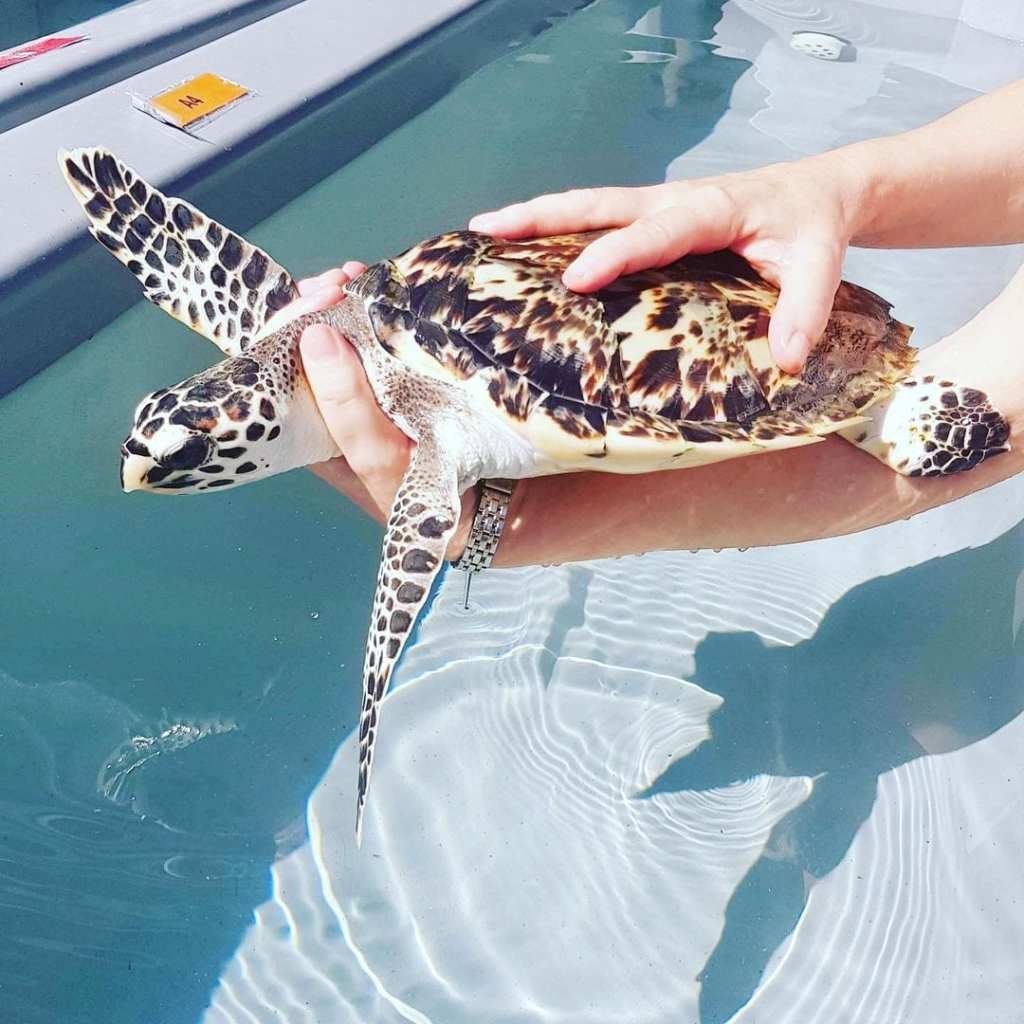Experiencing ocean life for the first time, eleven hawksbill turtles raised from hatchlings at James Cook University, have been released on the Great Barrier Reef.

Image Credit / JCU Turtle Health Research

Image Credit / JCU Turtle Health Research
Now two years old, the hawksbill turtles are part of groundbreaking research at James Cook University (JCU), assisted by the World Wide Fund for Nature-Australia and Traditional Owner rangers, to unlock the unknown life of sea turtle hatchlings.
These hatchlings were collected on Milman Island in the northern Great Barrier Reef and transported to JCU’s Turtle Health Research Facility in March 2019. Professor Ellen Ariel and her research team have carefully nurtured and observed the hatchlings ever since, with cameras monitoring their behaviour around the clock.
Hatchlings of most species of sea turtle swim out to open ocean and only return to coastal waters years later when they are much bigger. Their mysteriously unknown time in the open ocean is known as “the lost years”.
JCU scientists have uncovered fascinating discoveries about the early life of turtles, including notable differences between green and hawksbill turtles. Professor Ariel reports that green sea turtles are attracted to colours associated with the surface such as red, orange and yellow while hawksbills are drawn to colours linked to deeper water such as blue and green. The research team observed that green turtles are active all day and sleep at night, while hawksbills are active throughout the day and night.
Releasing the turtles was a special occasion for Birri Gubba Juru Elder and Gudjuda senior ranger Jim Gaston, who acknowledged the significance of returning the turtles back to yunga yalga, mother earth and the sea.
The hawksbills are fitted with satellite trackers to further develop our understanding of this critically endangered species. Researchers will be able to follow the turtles’ activity for about seven months while the batteries last. Eventually the trackers will fall off.
The release of the hawksbills was assisted by the Reef Joint Field Management Program which involves the Great Barrier Reef Marine Park Authority (GBRMPA) and the Queensland Government Department of Environment and Science (DES).




